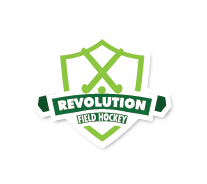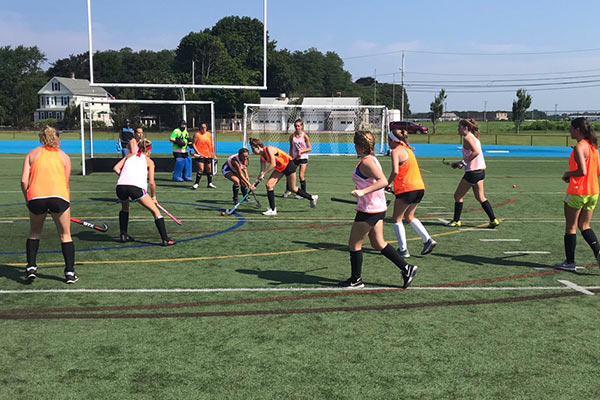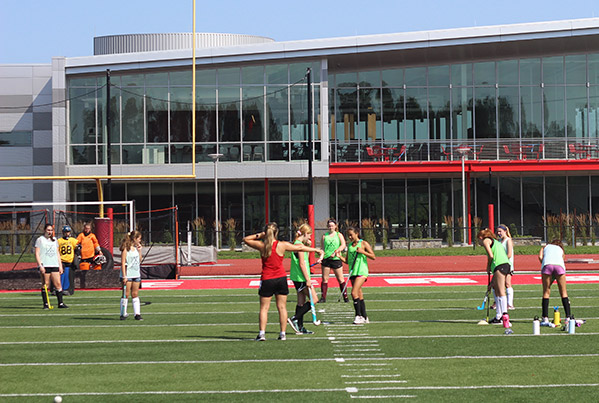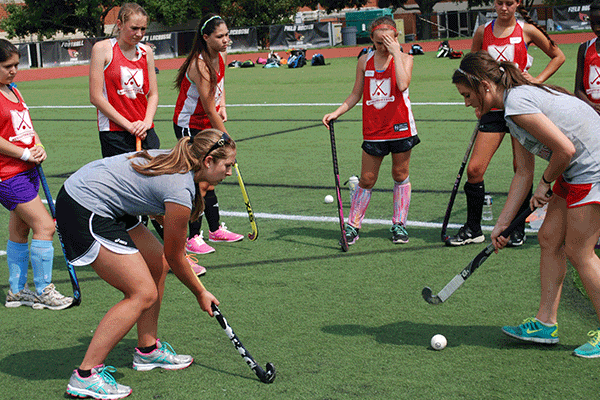Field Hockey Positions, Roles & Rules
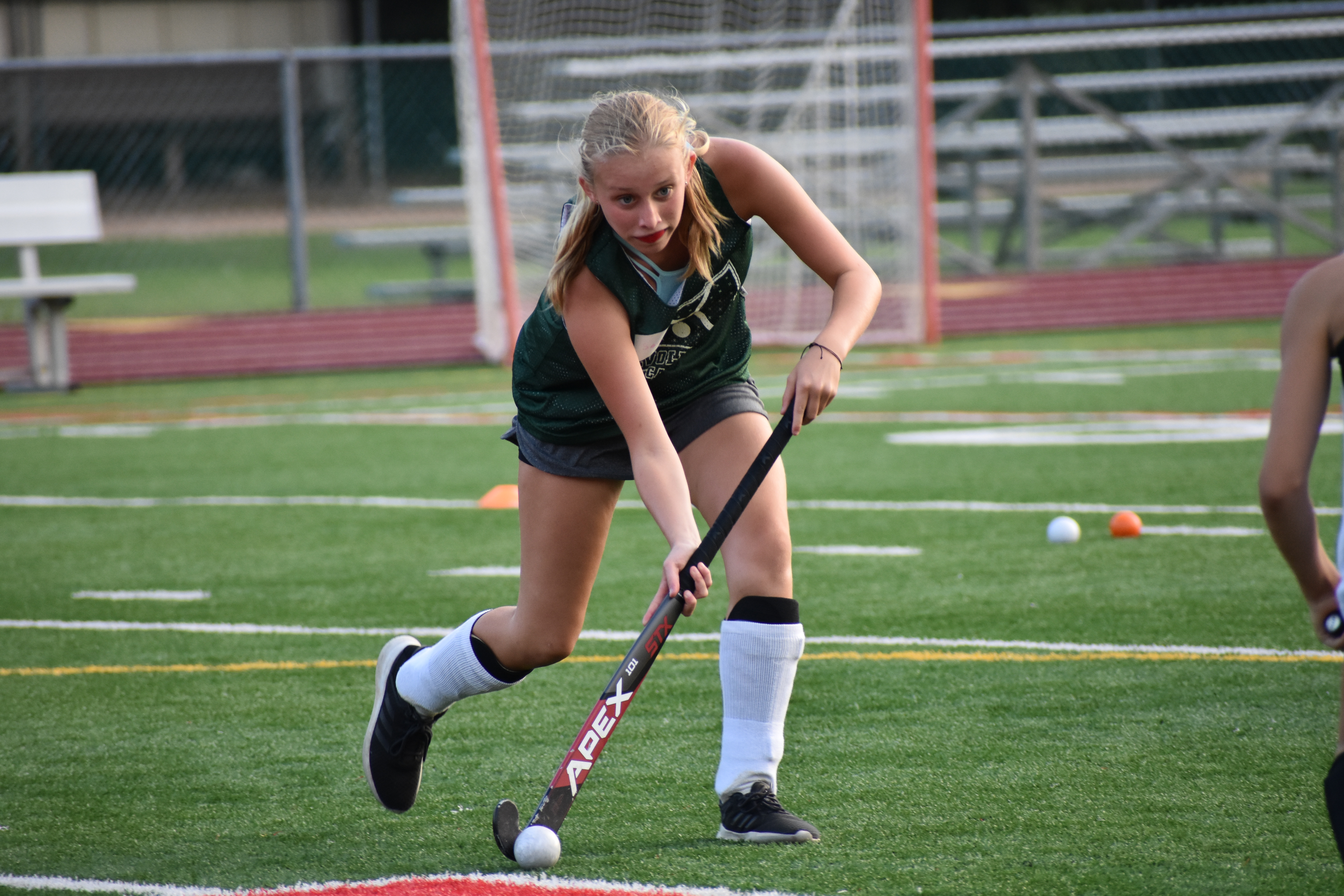
Field Hockey Positions, Roles & Rules
So your friends play field hockey, but you don’t, and you never know what they are talking about. Or maybe, you have never played before and are about to take lessons or go to a summer camp, and you want to know a little bit about the game first.
For whatever reason you find yourself saying “What is field hockey?”, here are some simple things anyone talking about or playing field hockey should know.
Field Hockey Positions
Each field hockey team has 11 players on the field during the game. 10 are field players and 1 is the goalie. Positions you might play include:
Forward
These are the field players who get to score the most. They spend most of the game in between midfield and the opponent’s goalie post, but their true home is in the striking circle (also called a shooting circle or scoring circle), which is why they are often the most skillful attackers on the team.
Midfielders
Sometimes called halfbacks or links, these are the multi-tasking runners of the field players. Their job is to act as both offensive and defensive players, so they are running back up and down the field going back and forth between offense and defense. If you want to play this position, you need stamina because you are going to be doing a whole lot of running.
Fullbacks
As you might guess from the name, these field players are fully in the back. They aren’t going to do much scoring, but that’s okay. Their job is to play defense. They stand close to their own goal, and try to keep the ball out of the goal before it even reaches the goalie. It is also their job to clear the ball – or get it back to the other side so the forwards can score.
Sweeper
Sometimes, a coach wants a little bit of an edge against a goal being scored. While a team does not have to have a sweeper, they can choose for one of their field players to be one in order to get that extra insurance. A sweeper is actually one of the fullbacks, but they stay in the back of the rest of the fullbacks and are the closest player to their team’s goal post other than the goal keeper.
Goal Keeper
Some people will tell you that this is the most important person on the team. The goalie’s job is to keep the other team from scoring. To be a goalie, you have to have quick reflexes and the ability to communicate with your teammates about defensive strategies.
Coaches have a little bit of flexibility in how many of each position are on the field. It is most common to go 4-3-3, meaning four forwards, three midfielders, three fullbacks — and one goalie, of course. However, some coaches choose to play a 5-3-2 field. Either way, you only get one goalie.
The Field (aka the Pitch)
A field hockey field, often called a pitch, has several different areas of play. In order to really grasp the sport, it is important to know what these areas are and what they mean.
Sideline
This is the boundary on the sides. A ball outside of the boundary line is out of play. When a team hits a ball over the sideline, the other team gets a side-in, which basically means they get to hit the ball back into play from the sideline.
End line
Like a sideline, only it goes the width of the field, behind the goal posts. The ball is also out of play when it goes over the end lines.
Center line
The line in the center of the field that divides the field in half.
25-yard line
The line on both sides of the field 25-yards in.
Striking circle
The area of the field surrounding the goal that a player or a player the scorer deflects the ball off of must be in in order to score. Also called a scoring circle or shooting circle.
Penalty stroke line
This is where you get to take your penalty shots. Also called the penalty spot.
Substitute area
When someone needs a substitute, they must wait until the play is over. In the meantime, the relief player is waiting in this area until they get to sub in. The player coming out must get off the field before the new player can come onto the field.
Basic Field Hockey Overview
So now that you know the positions in field hockey and parts of the field, here is a general idea of how to play field hockey. First, you probably already know the point of the game: to win by scoring more goals than your opponent does. However, there is more to it than that.
A field hockey game consists of two halves. Each half lasts 25 or 30 minutes, depending on what level of play is going on. In the case of a tie game, there might also be overtime. Leagues have their own rules about this, but if you do play an overtime, it will likely be a ten-minute sudden death (meaning as soon as one team scores, the game is over.) If needed, there can be up to two sudden death periods.
To make scoring more likely, there might be less players on the field during an overtime (typically there are 7 field hockey players per team instead of 10). If nobody scores in the overtime, the teams might take turns shooting penalty shots, with the teams scoring the most winning.
At the beginning of each half and after every goal, teams alternate a center pass. Both teams line up on their sides of the field, and the player on the team whose turn it is to shoot the center pass stands at the center with the opposing team standing about five yards from the ball. When the whistle blows, the player in the center hits the ball into play.
Offensively, players are trying to score. However, in order to score, players must be in the striking circle or they must deflect the ball off one of their teammates who are in the circle.
Defensively, players are trying to keep the other team from scoring. They do this by marking (guarding) and tackling (trying to take the ball away from the opponent.)
Players may not touch the ball with their bodies. They also must not make contact with another player or obstruct another player from the ball.
There you have it. Now that you’ve learned all about the positions in field hockey, the field, and the rules, when you head out to the pitch, or just talk to some field hockey-loving friends, you’ll understandwhat’s happening.
If you’re looking to learn more about the protective equipment, such as leg guards, that players wear and some common field hockey terms, check out Part 2 of this blog.
